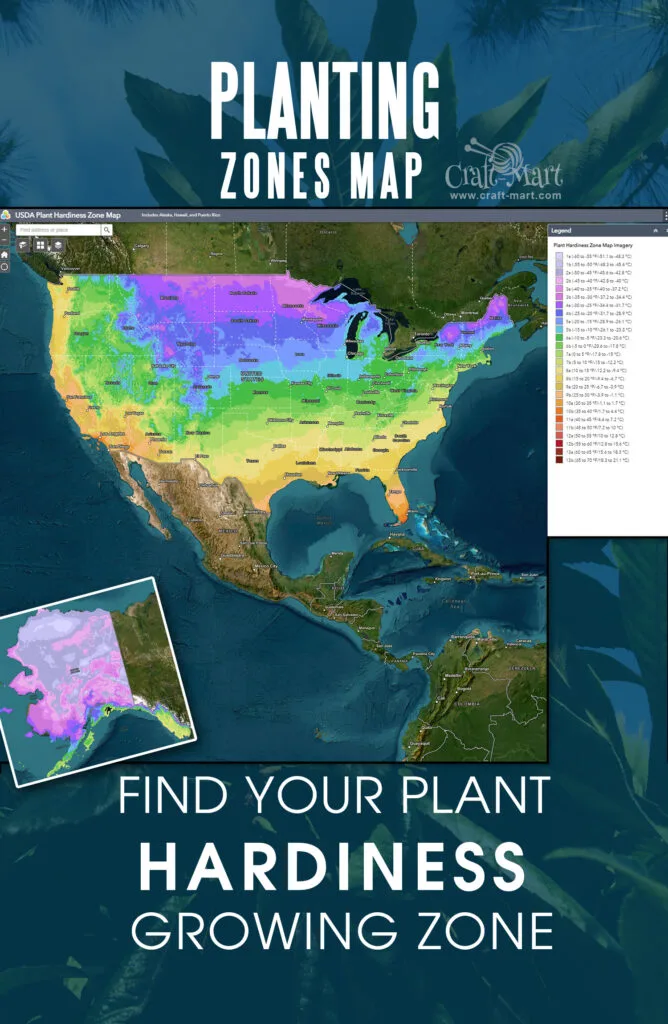How to Find and Use Your Planting Zones Map
You can find your planting zone with our interactive Plant Hardiness Zones map below, based on the information from the USDA Plant Strength Map of 2012. Enter your ZIP code and street address, or browse to your location.
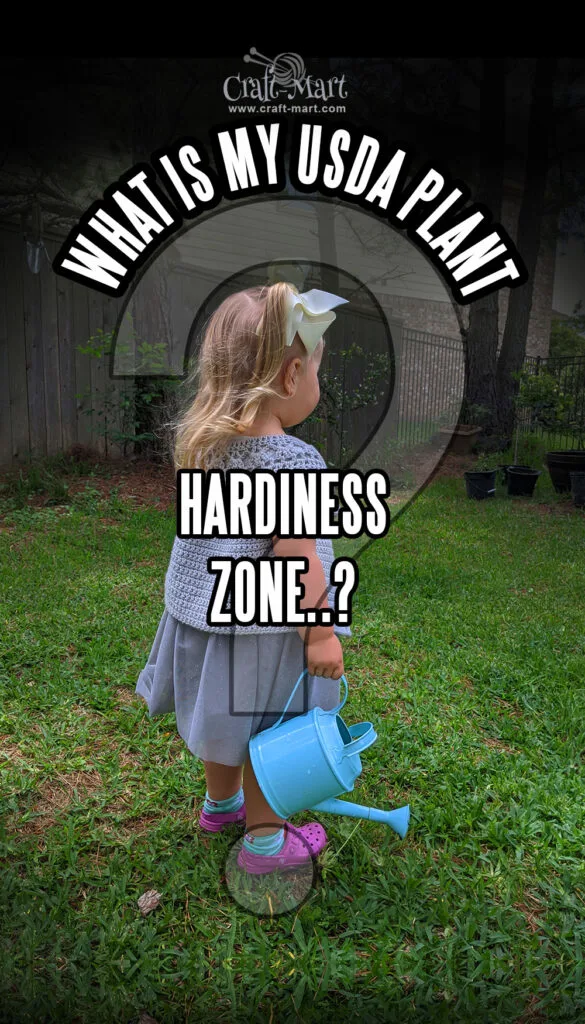
Indeed, not every herb, vegetable, shrub, or tree grows in every climate. When picking plants for your garden, it is tricky sometimes to choose varieties that can survive and thrive year-round in your location.
In fact, it is especially difficult for regions where extreme season temperatures are typical. The plant should endure year-round conditions, such as the lowest and highest temperatures and the amount of rainfall.
This system was created for the gardening and agricultural industry. It was a method developed for companies to show which plants would work best in which locations, based on the environment.
What is my growing zone?
Plant hardiness zones by zip code, state, or address
Note that the planting zones map is just a guide, not an absolute, particularly if you reside in a microclimate. These are tiny “pockets” that most typically happen in locations with steep elevation changes, a body of water, or urbanization.
Notably, they might be warmer or cooler than the surrounding zone. Find out more about such microclimates.
How to Use Your Planting Zone
The plant hardiness zones map is most useful to gardeners growing seasonal plants. In general, perennials are meant to live beyond just one growing season.
Perennials should be able to endure the winter season in your location. For this reason, it is essential to know how cold it generally gets in your location and whether a specific plant is hardy enough to make it through those temperature levels.
How Does the Map Work?
The USDA Hardiness Zones Map was produced by collecting information from news stations around the United States. 1A is the coldest zone in the US which averages a minimum winter season temperature of -60 degrees Fahrenheit. 13B is the warmest zone which averages a minimum temperature of 70 degrees Fahrenheit.
When choosing what to plant in each zone, consider that the plant needs to have the ability to flourish in an environment with such low temperatures. For instance, if you’re planting in zone 9A, the plant should be able to make it through a minimum temperature of 20 degrees Fahrenheit to be seasonal.
Otherwise, you need to plant it yearly. If that holds true, inspect your frost dates and get a time of the year when it would be safe to plant in your zone.
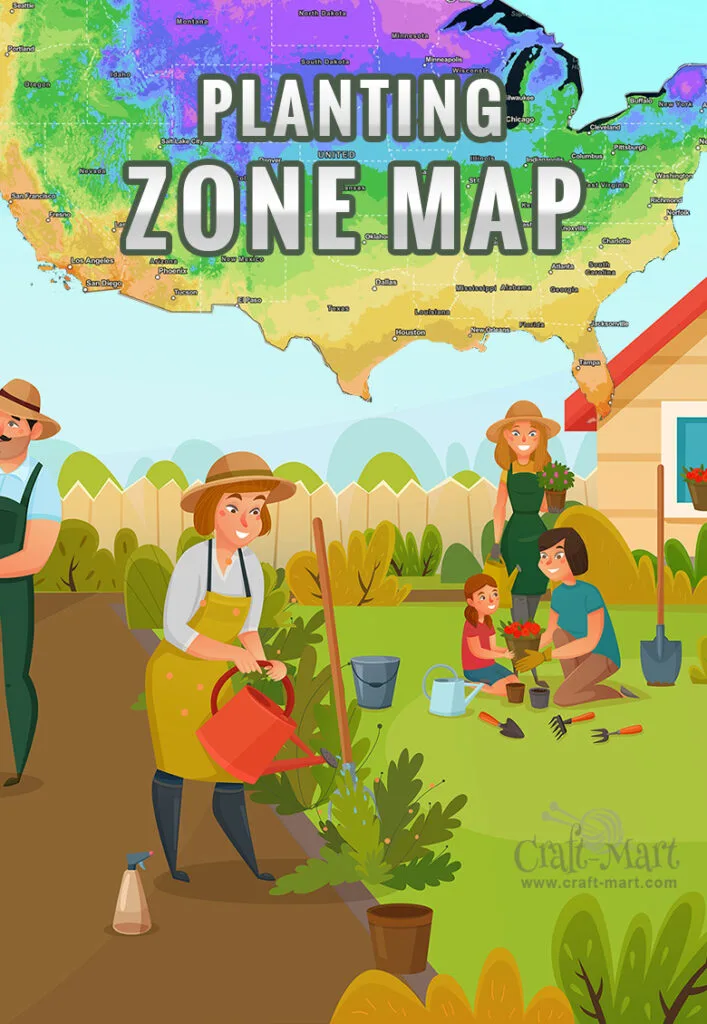
Why Does Planting Zones Map Matter?
If you’ve ever put in the effort to begin your plants from seeds or you have actually shelled out the money to plant a garden from seedlings somebody else has started, you comprehend why a planting zones map is important.
Planting a garden is a financial investment of both time and money. If you plant something at the incorrect time for your zone, you’ve wasted time, cash, and effort. You would understand which plant you can grow and how large of a time window you have for the growing season when you know your zone.
It’s common for individuals in parts of Alaska only to have a three-month growing season. On the contrary, individuals in zones seven through ten can produce a range of plants almost year-round.
If you’re uncertain how to figure out which plant grows in your particular zone and when then utilize a planting schedule based on your location, check the planting zone map.
This will show you what months to begin seeds indoors, when to plant them outdoors, and if they can be grown in your area a 2nd time.
You can also read the product packaging at nurseries which will read “Hardy up to zone X” or “Will grow in X zone and listed below throughout X season.” Plant hardiness zones map should be your very first step in a happy journey of growing a successful garden.
Other Factors Which Will Effect Your Garden
Although USDA hardiness zones are essential to your garden, however, they aren’t the know-all-end-all. There are other pieces to the gardening puzzle.
It’s important to understand each piece since knowing your zone and planting at the appropriate time for your zone will not equate to success without these essential components:
Water
There are a couple more aspects to understanding how to water your garden properly. The general rule is to offer your plants one inch of water per week. Be sure to use the water in one or two deep watering sessions each week rather than four or 5 shallow watering sessions throughout the week.
Soil Quality
To emphasize, the quality of soil is very important. You must check for soil pH and make certain it’s at the proper level for the plants in your garden. Be sure to modify your soil with compost and other organic matter to assist in making it well-drained and fluffy.
Fertilizers and Minerals
Surely, use organic fertilizer and annually add micronized minerals like Azomite mixed with compost to your plants. Learn about the benefits of sea salt spray and other natural remedies that can boost your plants’ immunity.
Sunlight
As everything requires water, everything needs sunshine too. For this reason, make sure your garden is in a bright location with well-draining soil.
It’s a great concept to put your garden where it’ll get at least 6 hours of sunlight per day. If this isn’t possible on your property, think about container gardening where you can move your garden around to get adequate sunlight.
Regional Aspects
Planting zones can vary in your region. Some states can have two or more hardiness zones in their state alone. As a result, you will have different temperatures and planting times. However, they all have to face specific weather typical to their area.
For example, according to the plant hardiness zone map, zone 8 spreads from the east coast of the United States to the west coast. As an illustration, someone in zone 8 on the east coast must deal with conditions that are completely irrelevant to those on the west coast in the same zone.
In fact, particular areas of zone 8 are much hotter than other locations. Some places handle cyclones and twisters, while other areas do not experience these conditions as much.
Some locations within the plant hardiness zones map may also have microclimates that make the general climate different from the surrounding areas. This mostly occurs in heavy city areas where buildings take in the sun’s energy and radiate the heat to the air. Consequently, this makes the temperature level higher than the zone average.
If you reside in an area where you know you will face extremely high-temperature levels or drought eventually in the gardening season, you might prepare ahead by creating a hugelkultur garden.
Understanding what weather risks prevail in your region can assist you in better preparation for your gardening season. In summary, all these aspects will play an essential role to ensure your garden has the greatest chance of success.
What’s the Next Step?
Practice Alternative Growing Methods
Many people in colder locations use greenhouses to prolong their growing period. It is a great way to start seeds earlier and produce crops later.
Even if you don’t live in an extremely cold zone, you can still use a greenhouse to grow vegetables over the winter to keep the frost off of them. You can also practice straw bale gardening to be able to plant earlier since you build the garden and soil each year.
Know Your Frost Dates
With the USDA map, you can find out what plants you can grow. Another piece of information you should know is when to grow it. Just because a plant can be planted in your zone, doesn’t mean you can grow it all year.
Use the frost dates finder to find out the average first and last frost date in your area.
Don’t Grow Certain Plants, Find alternatives
Each plant has zone requirements. For example, Soursop trees are also known as Graviola or Guyabano trees. Hardy to U.S. Department of Agriculture plant hardiness zones 10 through 11, the Graviola tree may not survive in Northern Texas but will do pretty well around Miami, FL. There is a nice replacement though, for Graviola in Texas – it’s called Pawpaw tree which can withstand temperatures of -20F (-28C). …and it’s delicious!
You can usually find the zoning requirement on seed packets. Furthermore, local stores wouldn’t sell seeds that can’t grow in the area.
It can be heartbreaking to learn that you can’t grow your favorite vegetables. Indeed, it isn’t worth the headache to plant something outside of your planting zone.
Unless you live near a zone border, you won’t be able to grow plants outside your zone. In that case, prepare to mulch heavily and take the risk of extreme winter temperatures.
Plant Annuals as Perennials
On the other hand, if you live in warm zones, you might be able to grow some annuals as perennials.
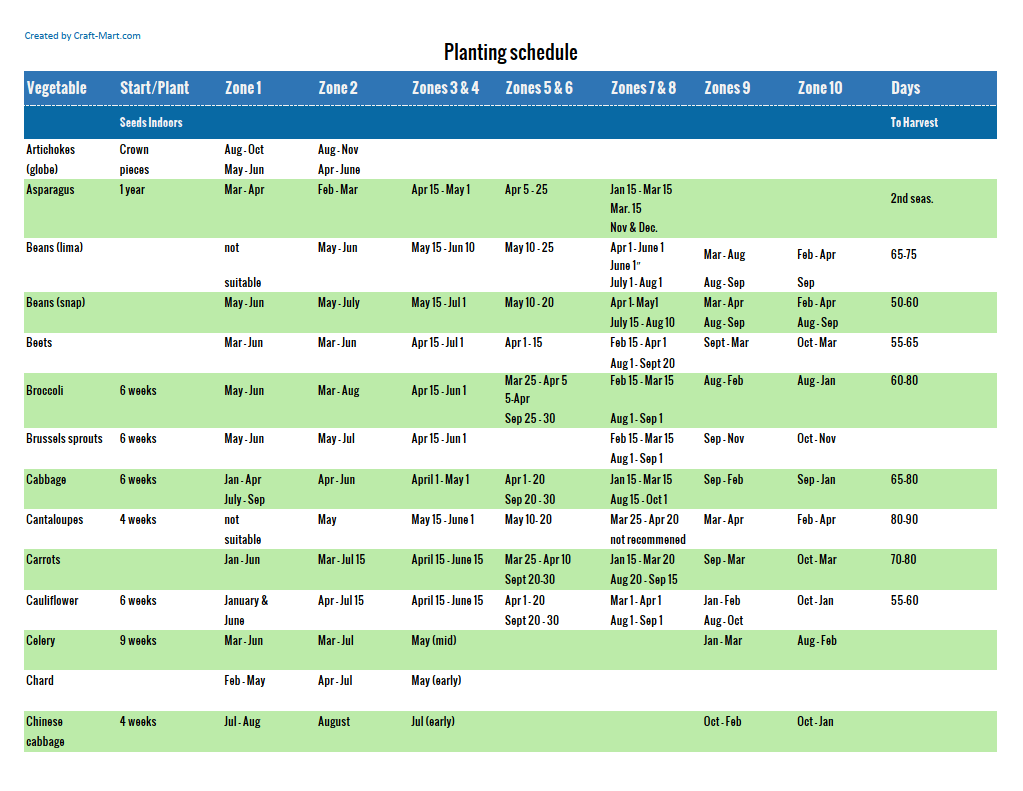
As an illustration, kale is a vegetable that grows in all zones, but you can grow it as perennials if you live in zones 7 and up. Consequently, you can have kale all year long. What else can you grow based on the plant hardiness zones map?

Make sure to know which annuals can be planted as perennials according to the plant hardiness zones map because choosing to plant perennials will make your garden more productive.
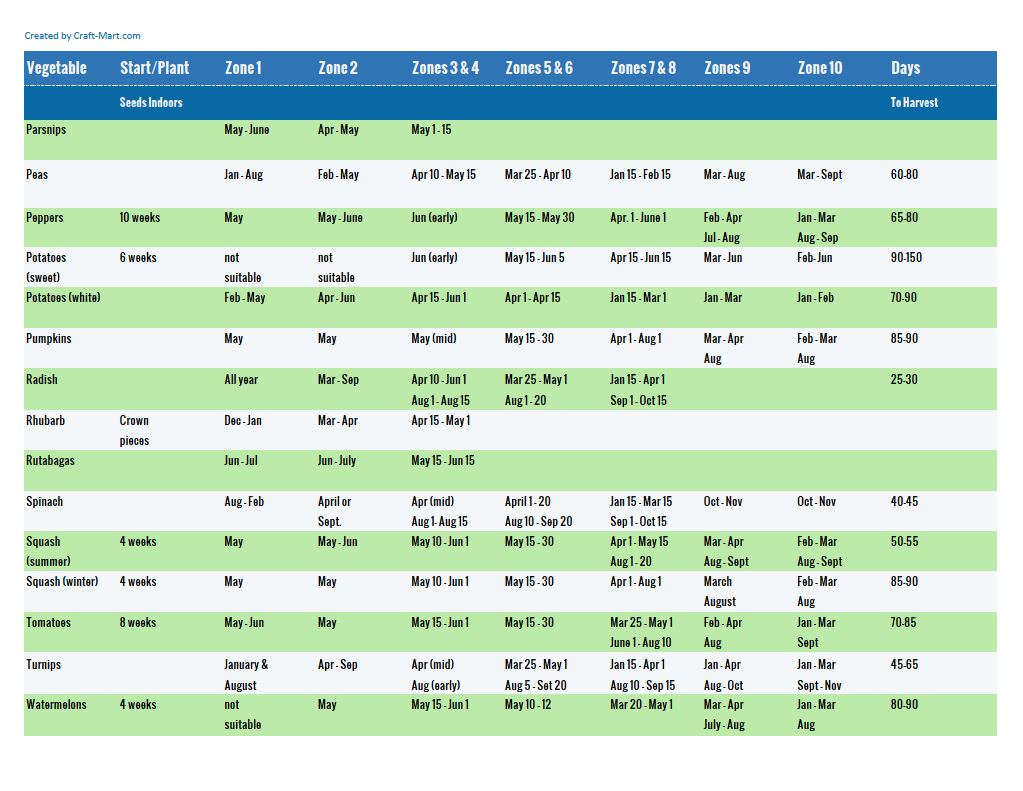
Gardening Tips for Your Zone
If you learn gardening from the internet or books, check if the guide is zone-specific.
Be careful, as most authors of gardening tutorials don’t realize that their tips can only be applied in some particular zones. In that case, they can’t tell you if the guide is zone-specific according to the plant hardiness zones map and it’s up to you to decide whether you can use it or not.
Growing your own food for many becomes more essential every year since we simply can’t trust commercial organic food quality even when paying premium prices. Learning what you can and should grow in your garden becomes one of the most important things for many families striving to stay healthy and save money.

